By Stephanie Metzler
Article
Fire-Fueled Finds
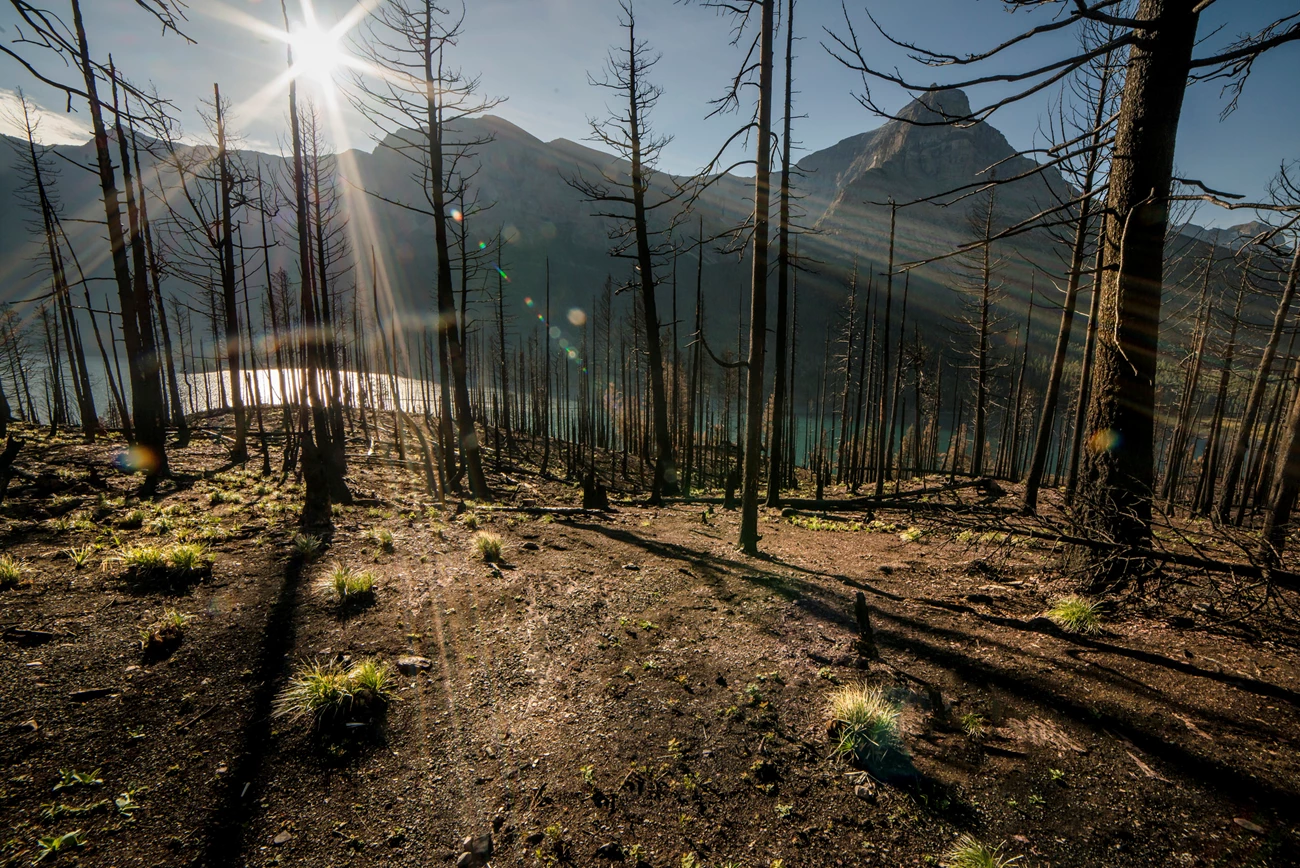
NPS/Tim Rains
Driving Going-to-the-Sun Road (GTSR) has become a must-do summer activity for those touring Glacier National Park, and—though it is freshly repaved and the vehicles are far more comfortable—that driving experience is much the same now as it was for early motorists. Squeezing past oncoming traffic, hugging the wall on turns, and gazing awestruck from the incredible perspective of Logan Pass are things all GTSR travelers have done since its completion in 1933. But the scenery itself is not unchanging.
On July 21, 2015, a fire was spotted in the St. Mary Valley. It grew and spread and became the Reynolds Creek Fire, which burned for several weeks on both sides of Going-to-the-Sun Road. Now the views of the park are spectacular in a different light. Winding through the eastern half of GTSR, drivers pass through charred snags surrounded by low, often sparse vegetation. Never-before-seen glimpses of St. Mary Lake appear. It’s a whole new perspective. And just as those forests once hid these views, they hid other, more personal finds.
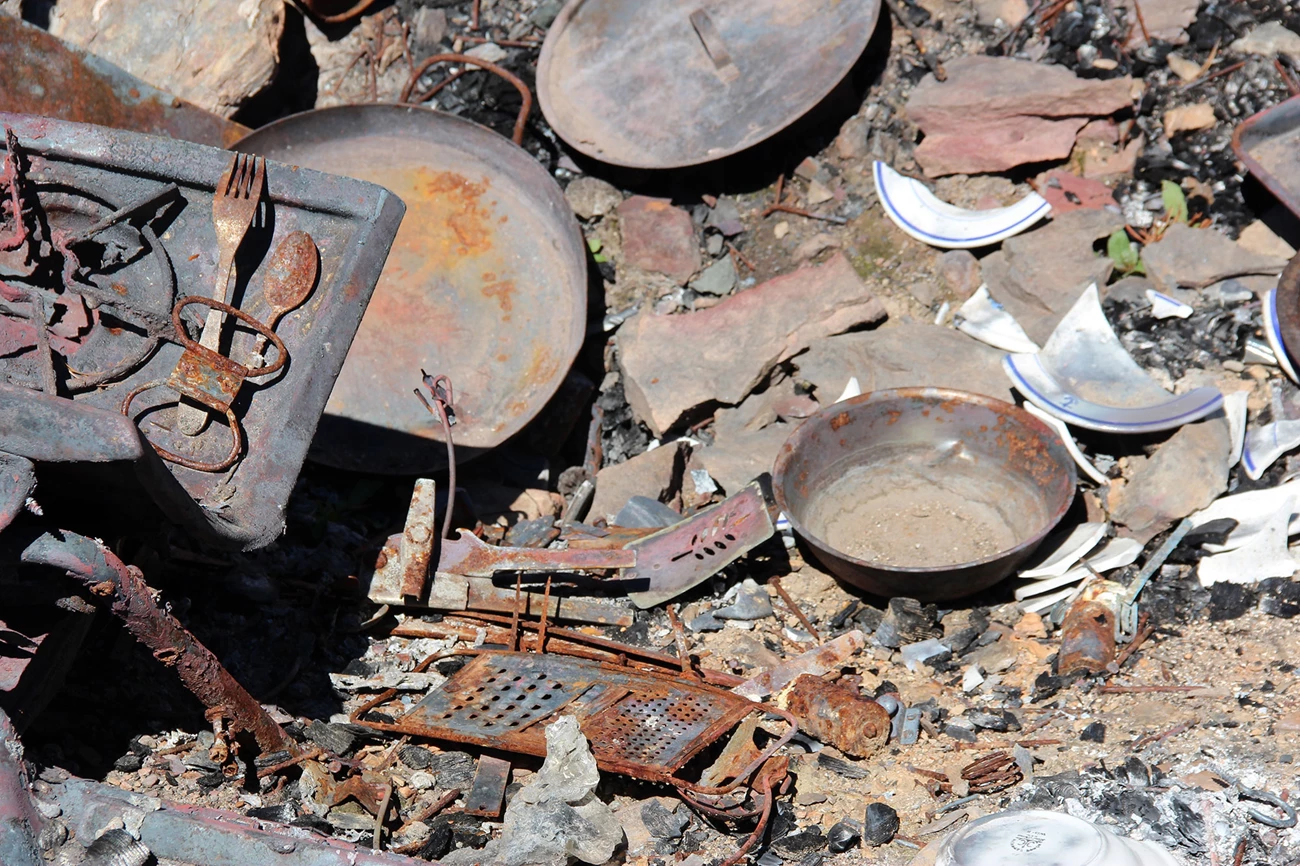
NPS/Melissa Sladek
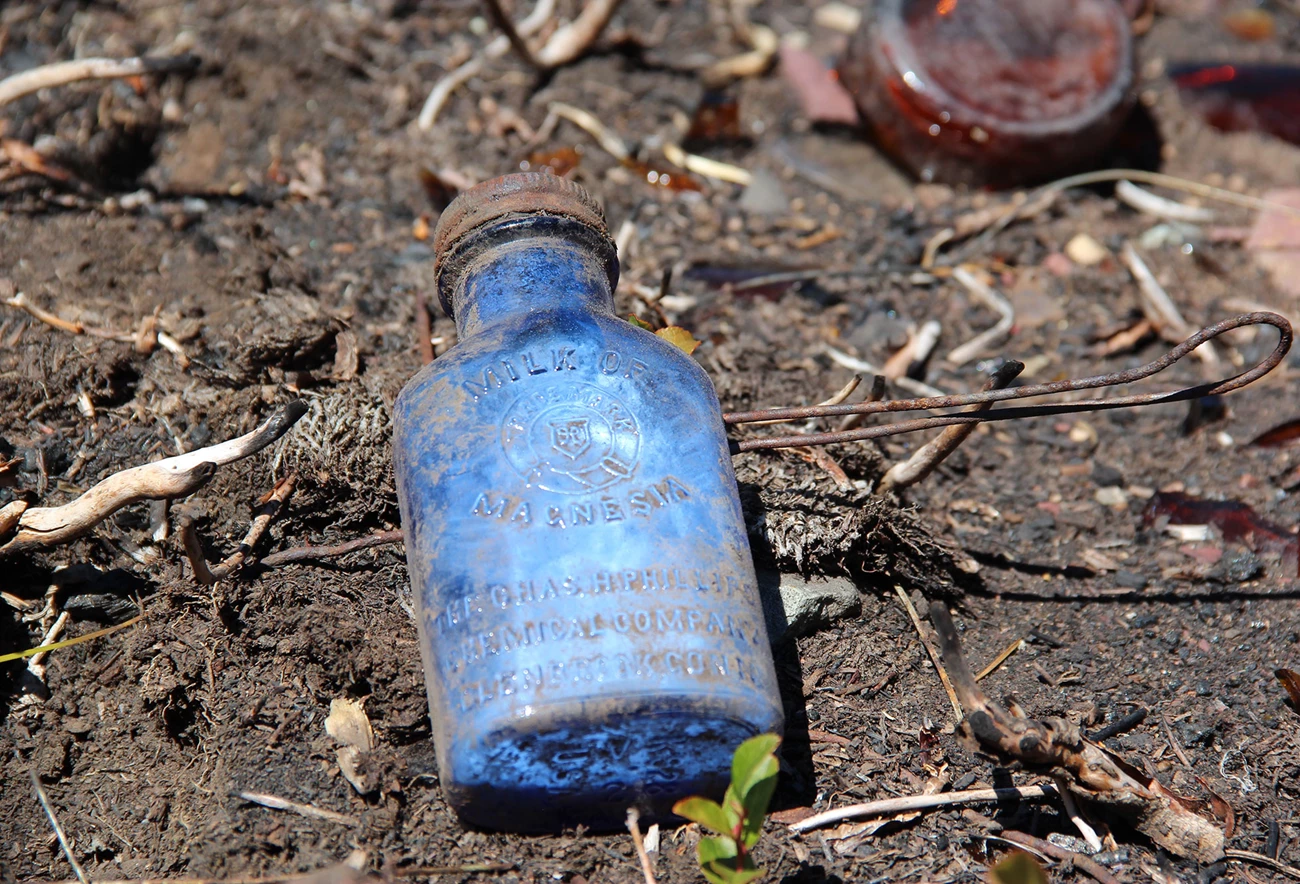
NPS/Melissa Sladek
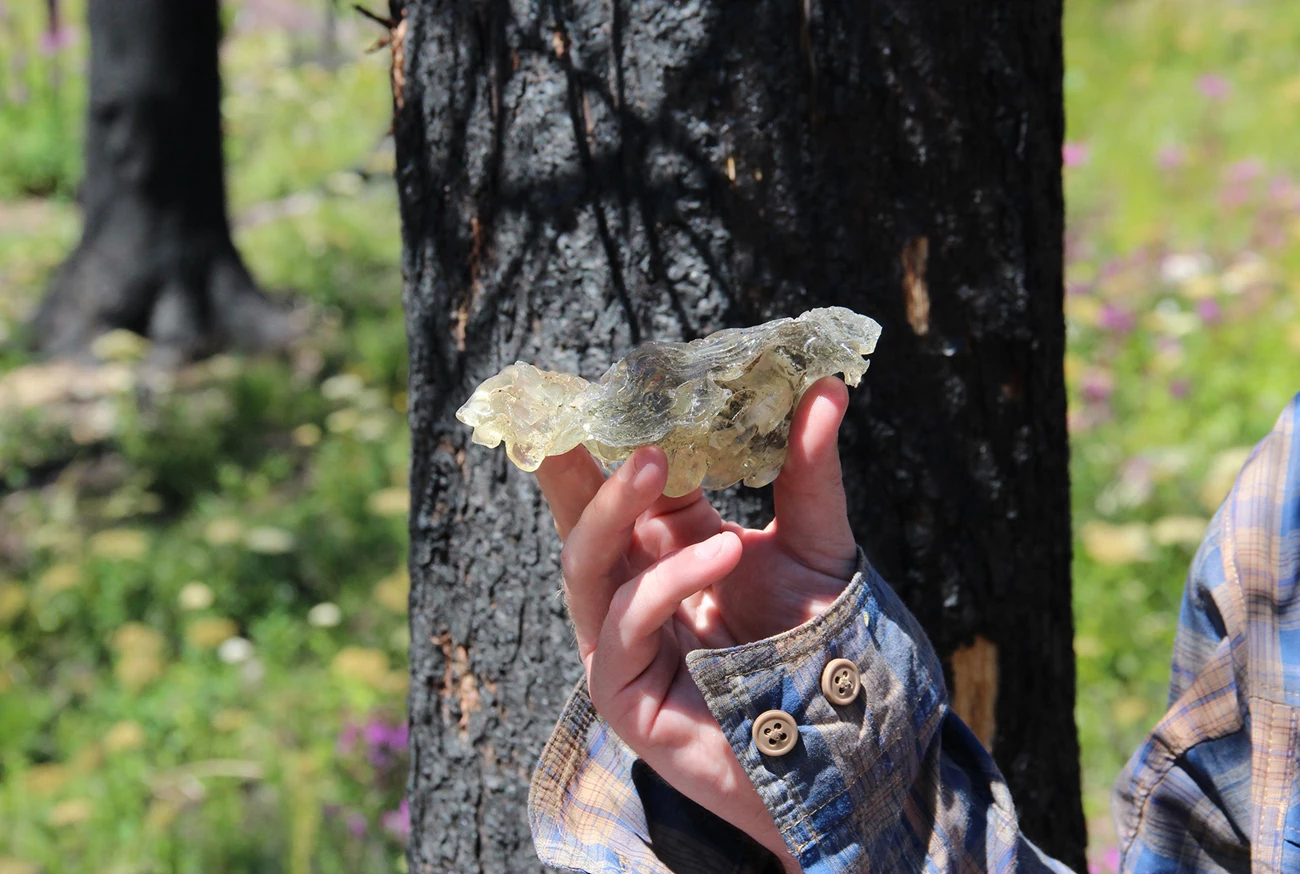
NPS/Melissa Sladek
Shape, size, materials—every piece of information about a site or artifact is important. And nothing is more important than context. Where was this found? Around this cabin structure children’s toys were discovered, telling us families probably lived here. Conversely, the lack of toys or household items at the construction camps points to the fact it was probably only men living there in makeshift barracks.
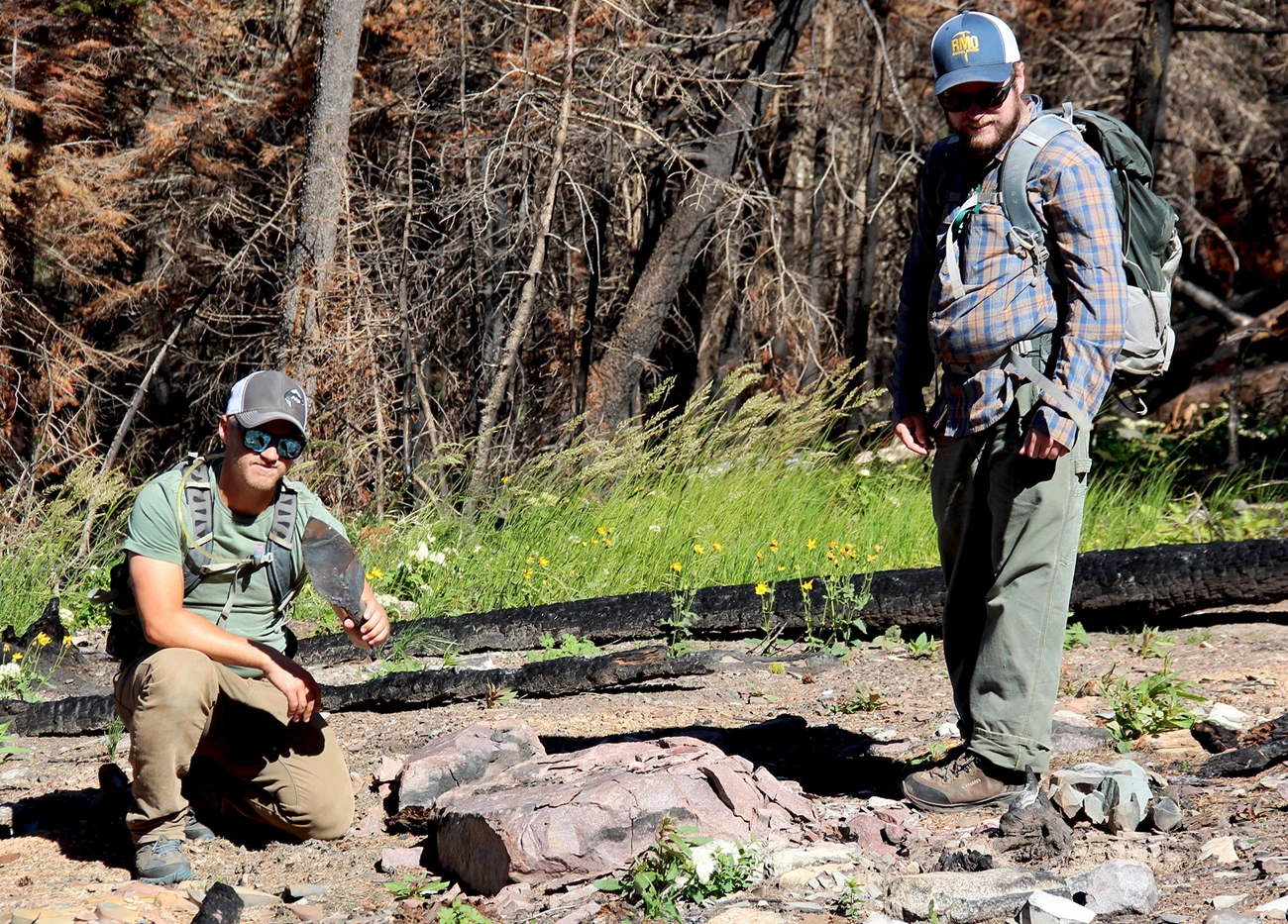
NPS/Melissa Sladek
There are no plans to remove the artifacts found in the burn area. They help tell the story of this place. If you happen upon one of these sites, remember the objects aren’t litter that needs to be cleaned up. Nor are they souvenirs to put in your pocket. They are protected park resources, just like the rocks, bears, or buildings. Each artifact and its location on the ground provide information about the people that used this space. If you choose to handle them, please replace them as closely as possible to the way you found them. These resources show human connection to the land. A story that is still unfolding today.
Photos and quotes from July 2016 exploration of burn.
Last updated: July 27, 2021
